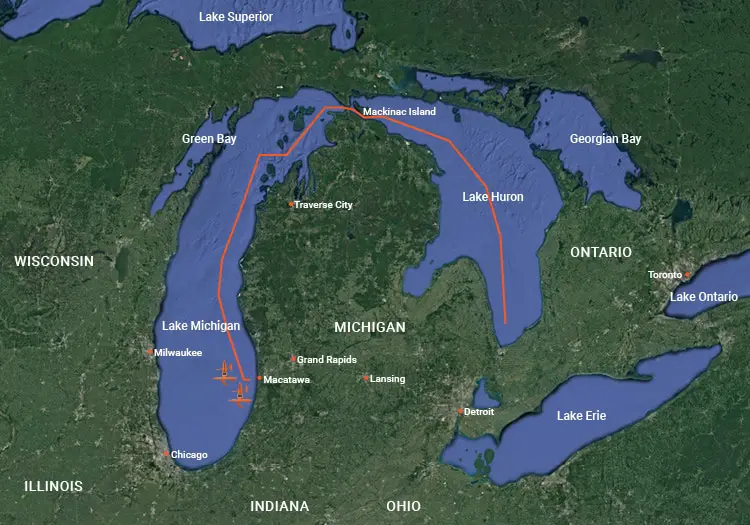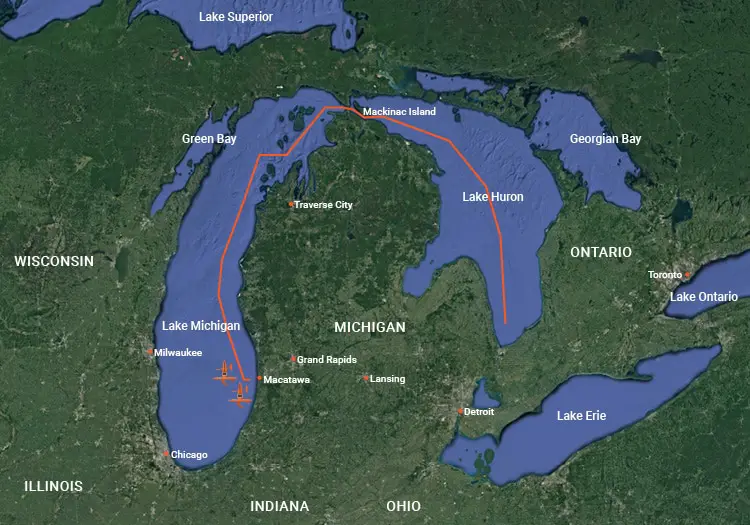North America’s Great Lakes are the world’s most significant freshwater habitat. The Great Lakes also support a $7 billion commercial and recreational fishing industry. It’s been challenging to estimate fish stocks. So, to overcome this problem, a pair of 23-foot sailing drones are already on the Great Lakes for a two-month exploration on the lakes and to conduct a Lake Huron fish count. The drone sailboats are owned and operated by Saildrone, a California-based company.
While there is plenty of walleye in Saginaw Bay, yellow perch stocks have been declining for years. Problems such as deteriorating habitat, climate change, plus invasive mussels endanger the health of significant species such as lake trout, whitefish, walleye, in addition to northern pike.
What Are Saildrones?

The 23-foot self-navigating boats are powered by wind and solar energy and do not carry passengers. Instead, the Saildrone Explorer drones feature a 15-foot-tall wing sail and a weighted keel. They carry a cargo of science instruments, navigational and communications devices, and other equipment on their hulls.
Drones will be used to count fish. The information gathered will influence how much commercial fish fishermen can catch. The Great Lakes encourage industrial fishing, but the Michigan DNR needs to know where and how many fish are in the water before adopting standards.
First Freshwater Mission on the Great Lakes and Lake Huron Fish Count
Over seven years of operation, Saildrone’s fleet of crewless surface vehicles has proven its data collection capabilities from the Arctic to the Antarctic. These ocean drones have now reached a new nautical domain: the Great Lakes. Two Saildrone Explorers took off from Macatawa, Michigan, for a 45-day fishing mission on behalf of the US Geological Survey’s Great Ponds Science Center (GSLC).
The data on the fish population will be collected using drone sailboats and a crewed boat operated by the US Geological Survey’s Great Lakes Science Center. Data from all three ships will be compared to assist in the establishment of commercial fishing guidelines. In addition, researchers will investigate the dispersal of fish during the day and night and the effects of invasive mussels around the food chain.
The project will be reported from time to time on Saildrone’s Twitter feed.
View Original News or Feature Article on Thumbwind.com





